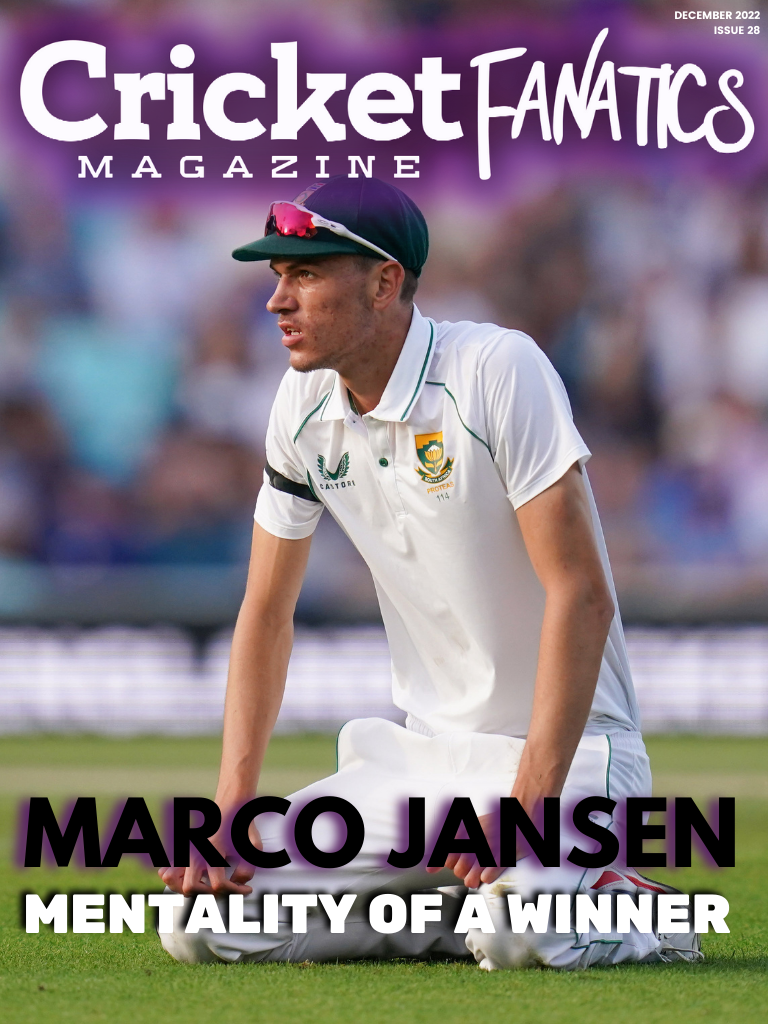
Table of Contents
EDITOR'S NOTE
Time to move forward...
Khalid Mohidin
Founder and Editor - Cricket Fanatics Magazine
The dust has settled, but the pain remains.
Every time I think about it and talk about it I feel a frustrating sinking feeling. All we had to do was beat the Netherlands… But it was not just about losing to the worst-ranked team in the tournament, it was the body language of some of the players in the match that irked me.
A lack of energy was the reason given by the now departed Mark Boucher, an excuse that won’t ever sit well with me. How can there be a lack of energy in a game when the stakes are as high as they are?
I think the main thing every cricket fan expects is an effort to be put in - as a bare minimum. It’s how you lose that matters to us. At least for me, as a fan, the effort shown by the players matters.
Now that the T20 World Cup exit is behind us and the new season has begun, it’s time to analyse what went wrong and where the problems lie regarding South Africa’s relationship with ICC tournaments.
In this issue, we look ahead and try to discover what the Proteas need to do moving forward.
How do the Proteas become the captain of their ship? How do they create a winning mentality in a team environment where the “chokers" tag has haunted them for generations?
We put together a magazine that highlights the characteristics of a winning mentality. This will help the next generation of cricketers understand what it takes to make it at the highest level and provides insight to everyone who has gone through decades of heartbreak.
So sit back, grab a beverage and a snack, and enjoy issue 28 of Cricket Fanatics Magazine.

How you can help promote SA Cricket
By Khalid Mohidin
Hey, guys! Welcome to Cricket Fanatics Magazine, the first and only fan-driven Cricket publication in South Africa.
This is a very special announcement that I believe will change the way cricket is supported in South Africa.
I started this venture on 1 July 2019 with a vision to get fans from all walks of life engaged with the game and give them access to the personalities in South African Cricket.
We want to tell the untold stories of South African cricket and we want fans to be heard.
Since we started, we covered the Mzansi Super League, Women’s Super League, Proteas Men and Women International Test, ODI and T20I series, as well as school and club cricket, with the aim of providing entertaining, engaging and educational content.
But haven't stopped there.
We started a Monthly Magazine where we provide multi-media content, including exclusive features, opinion pieces and analysis.
This works hand-in-hand with our YouTube channel where we produce unique cricket shows that allow fans to call in and have their say.
We have the Daily Show, which reveals all the major talking points in South African cricket, the Sunday Podcast Show where we sit back, relax and engage with the live chat, answering all the questions fans have about us and the game.
We have Off-Side Maidens, the first ever All-Women’s Cricket Show on YouTube, which helps empower women in cricket and gives them a place to share their own views on not only women’s cricket but all cricket.
We have a Legends show, where we interview all legends in cricket.
To produce all of this, we’ve invested a lot of money, time and effort to bring this to you for free.
But to keep this going we need your help.
So we have opened a Patreon account.
In the past, the super-rich supported the work of artists as patrons of the art.
Today, we are fortunate that technology has enabled anyone to become a patron of creative work, even if they are not billionaires.
We have therefore launched a campaign for you as a Cricket Fan to become a patron and support us as an independent, bootstrapped publisher.
As a Patron, you also get your voice heard as a Fan.
Plus: You have the opportunity to become more engaged with the content we produce.
Every month we produce at least:
- 60 Website Articles
- 20 Daily Video Shows
- 4 Weekly Podcasts
- Match Previews
- Match Reviews
- Video Interviews
- And more…
So please join our Patreon today initiative today. Even a tiny amount can make a big difference.
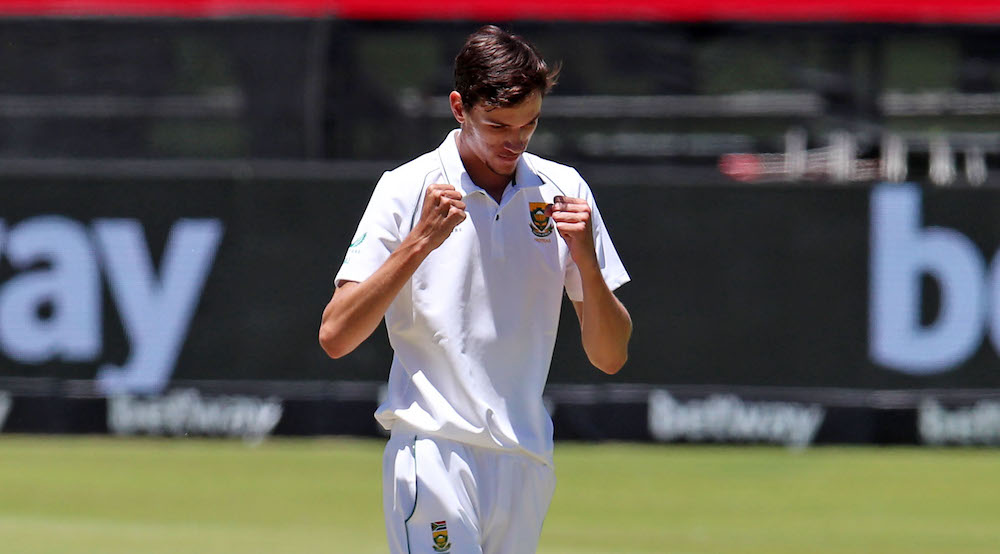
Marco Jansen: Mentality of a winner
By Ongama Gcwabe
Shock and disappointment are always associated with South Africa’s World Cup campaigns.
The T20 showpiece in Australia last month was supposed to be the one that changed the course of history for South Africa.
The squad that was selected was exciting and the conditions on offer in Australia also favoured South Africa, but somehow, the team managed to stick to the script and maintained their reputation at ICC events.
Amidst all the chaos of the World Cup, a 2-metre figure managed to go under the radar.
Unseen, only because he didn’t feature in any of the matches in Australia, a 22-year-old prodigy soaked in all the experience.
“It was a very nice experience. It was my first World Cup seeing how it works, seeing the crowds and to just be in Australia was a nice experience.
"For me, it was about enjoying the experience and if I got a chance to play, I’d have to go out and give it my all,” Marco Jansen told Cricket Fanatics Magazine.
Like a duck to water, Jansen hit the ground running in international cricket from the time he made his debut in a Boxing Day Test against India last December.
Many had only heard of him and seen glimpses of him in the IPL but I doubt anyone could confidently say he was going to be one of the first names to be dotted down whenever the selectors were putting together an XI just 12 months into his career.
For Marco, it’s his massive hunger that set him apart from the many 22-year-olds in the domestic circuit. It’s his hunger that gave him no choice but to succeed on debut against the best Test team in the world at the time.
“I have a massive hunger to perform. I remember my debut, my first over went for 14 runs and while fielding I hurt my side and thought I had a side strain. Many things didn’t go well on my debut so I told myself in the second innings that there’s no flippen way I’m letting this opportunity slip. I told myself that I was going to fight,” said Jansen.
“In my head, there was no way back, it had to work. I remember quite clearly thinking to myself, ‘this has to work.’
"Deep down, I’ve always known and my family knows as well that I don’t want to work a 9-to-5 job. I want to do what I love and I’m grateful I got the opportunity.”
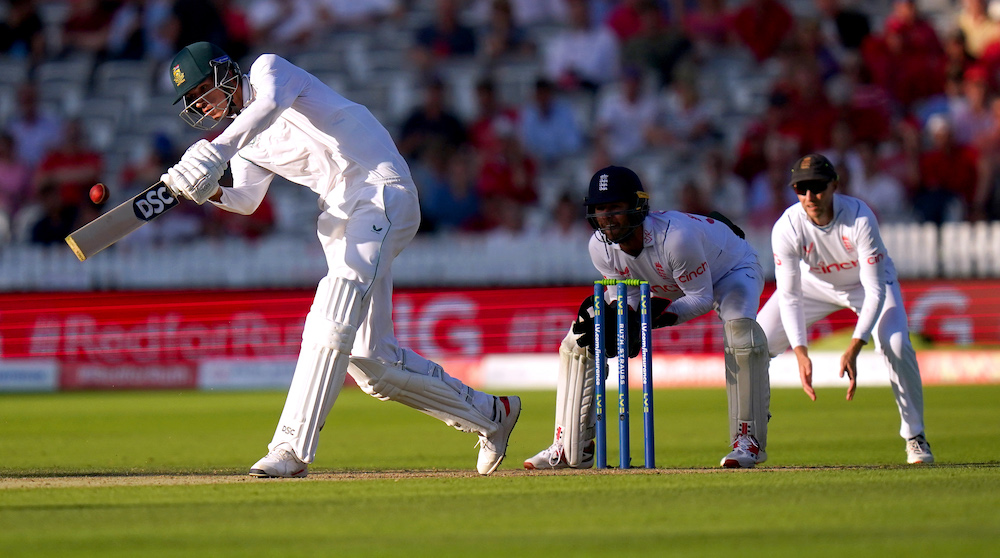
Commonalities between high performers, particularly in cricket, is that they all take pride in playing for their country. They want to see South Africa do well. They want to win trophies for South Africa.
The same sentiments are a part of Jansen’s DNA. He wants to play for the Proteas for as long as possible. The Proteas badge means a lot to him to such an extent that he always carries his green Test cap with him wherever he goes.
He takes pride in that he now has his own cap and wants to do all that is possible to deserve to put it on whenever he goes over the boundary rope to represent his country.
“I take it with me even when I go to the bathroom,” Jansen said jokingly.
“I just want to play for the Proteas for as long as possible. It means everything to me. I won’t change it for anything."
The opportunity to play for his country changed Jansen’s life as it would have done to any youngster dreaming of playing at the highest level some day.
At 22, Jansen will definitely return the favoUr by winning many games of cricket and hopefully the World Cup as well.
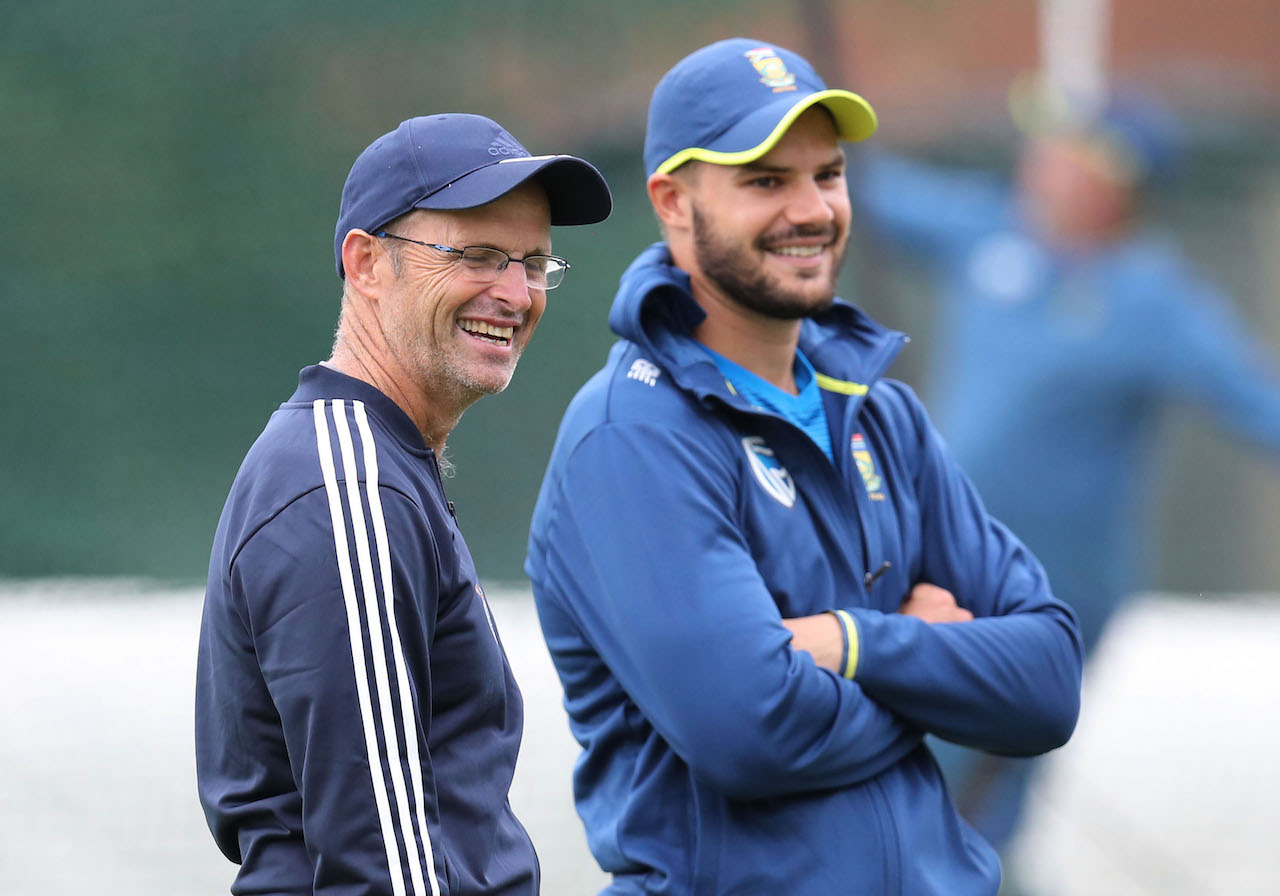
Proteas need to face cursed choker’s tag ‘head-on’
By Marc Jacobson
Reputable coach and Proteas legend, Gary Kirsten, believes that South Africa’s infamous choker’s tag at ICC tournaments isn’t an illusion and that the players need to face the reality that this mental stigma poses.
The Proteas had particularly suffered an abrupt collapse at the recent T20 World Cup in Australia, where England was crowned champions. But for large parts of their group stage, the South Africans were even deemed by many to be favourites after their scintillating and clinical victories over Bangladesh and India.
That Protea fire was then soon extinguished when they lost to Pakistan and then the low-ranked Netherlands, the latter of who had to qualify for the World Cup and who’d essentially knocked SA out of the tournament.
The outcome – and subsequent result – of their World Cup exit came as a shock to many, with that irksome choker’s tag leading many conversations over their post-tournament autopsy.
Kirsten, who served as a consultant for that same overthrowing Netherlands outfit, insists that the Proteas remain a “very good” team, but that this continuous World Cup blemish can no longer be ignored.
“One can understand them losing to Pakistan – Pakistan can beat anyone on any given day – but it was a surprise when they lost to the Netherlands,” Kirsten admitted when speaking to Cricket Fanatics Magazine.
“For us, it just comes down to those World Cups again – where we’re at mentally in those World Cup events. I definitely think there is some scarring from the past. I think one has to deal with it head-on and work out potential ways to manage it as best one can, but not pretend it doesn’t exist. It does exist.
“It’s not easy on the players, that’s for sure, because everyone starts to talk about it again and the hype gets up more when we get closer to those crucial games. So it’s quite tough to ignore.
“It requires a lot of experience of what’s happening within the team to help the players cross the line.”

The 55-year-old, who played 101 Tests and 185 ODIs for the Proteas between 1993 and 2003, and who coached India to ODI World Cup glory in 2011, indicated that there is no clear-cut solution to this mental pitfall plaguing the Proteas side, perhaps due to its prolonged and lasting effects.
“I don’t think there is any silver bullet, to be honest,” Kirsten said. “There are a whole lot of things that have to fall into place. I think back to some of our really good World Cups of late – such as the 2015 one where we were unlucky to miss the final.
“The guys have had some good experiences at World Cups of late, but I think it’s gotten to a point where they have nothing to lose. You can go into these events knowing you’re not the favourites, and that can certainly be of assistance.
“But I do think it’s probably not a bad idea for the powers that be, to come up with a different approach to what the team has tried to do in the past, to help them overcome the difficulty of the scarring that exists in that space.”
He added some philosophical wisdom and insight to those sentiments. “The definition of insanity is to do the same thing over and over and expect a different result.”
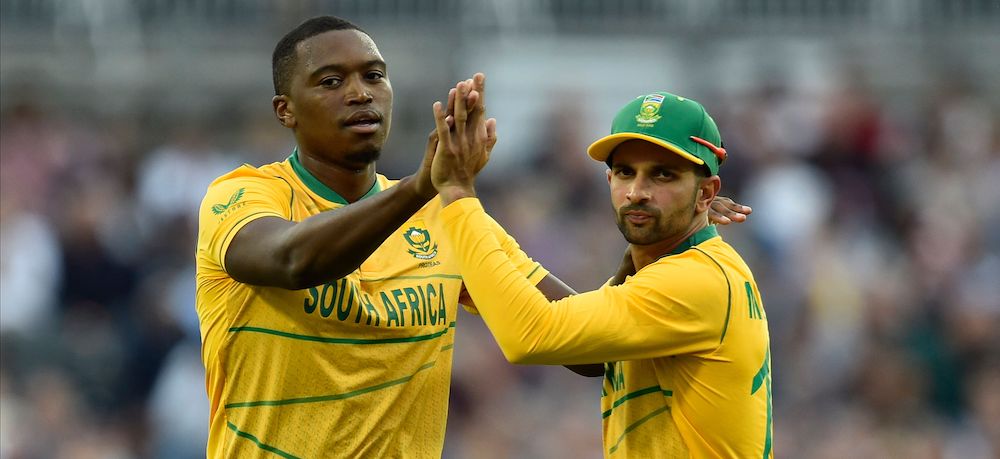
Kirsten, who enjoyed a rewarding experience with the Netherlands, an “associate country”, however, admitted the Proteas could’ve reaped some notable positives from their recently failed World Cup showing, especially with regards to the “way they put their campaign together”.
“They’ve had a lot of success as a T20 team, winning some important series against the best. I think they can take a lot of positives out of the way we play T20 cricket. I think it’s been very exciting.
“I think they need to continue on that journey. I don’t think there are any massive changes to make that will kind of shift things around to make the team better. The team is good.
“It’s not going to be easy to just say we have something else that will make it much better – the team has a high win ratio – and it’s just about their thinking around these World Cup events.”
Kirsten however noted that with the right amount of experience in a squad – with top-class coaching structures and enough preparation – a side would be giving themselves the best possible chance at international events.
This is something the Proteas can attempt to invoke in the future, especially looking ahead to the ODI World Cup in India in 2023.
New! Business Corner
Cricket Fanatics Magazine has the visibility, infrastructure, expertise and toolset to promote your brand, business, product or service.
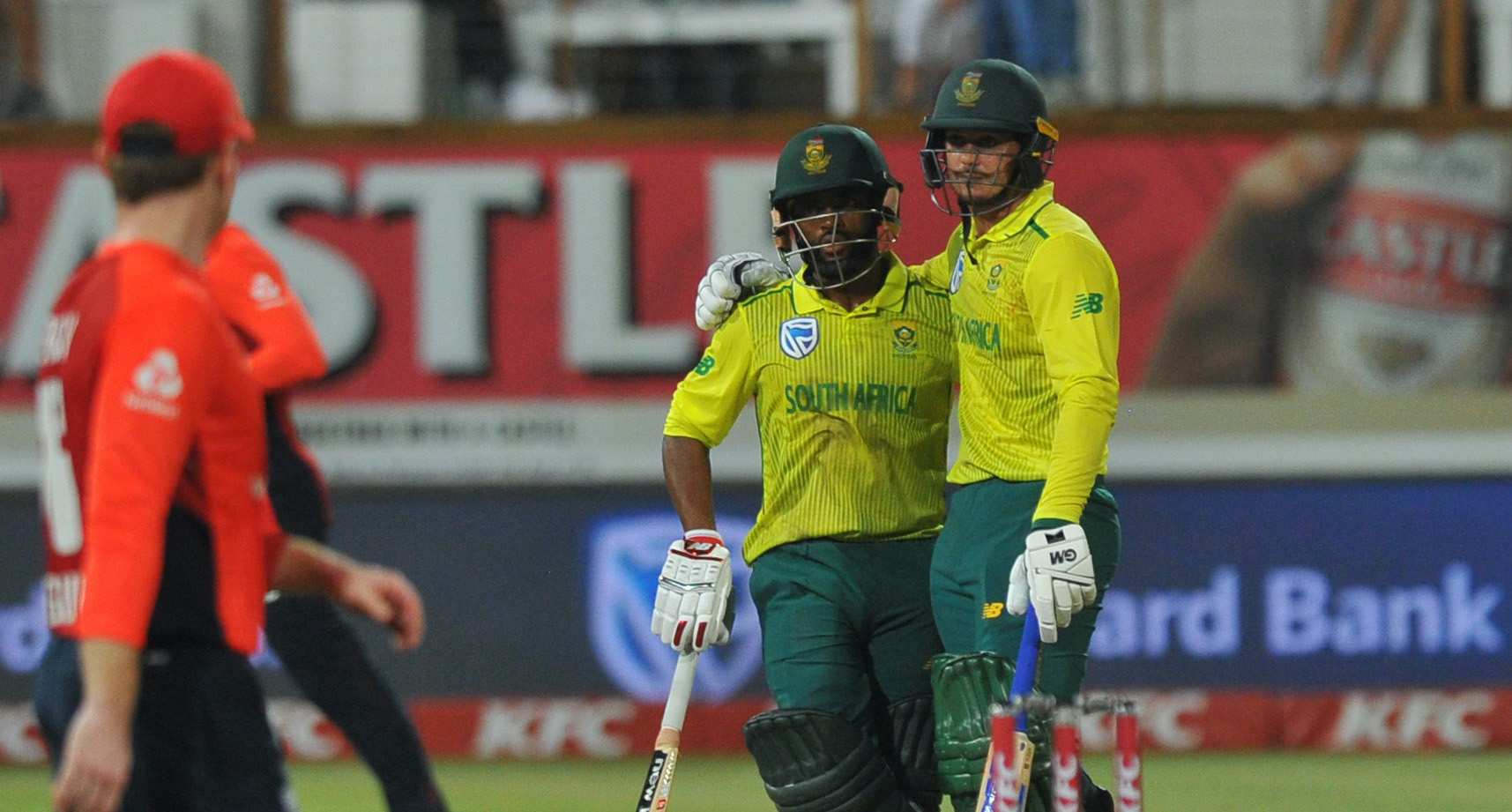
There's no place to hide in international cricket – Vinnie Barnes
By Ongama Gcwabe
Vincent Barnes identifies ‘belief’ as an antidote to South Africa’s self-inflicted crumbling under pressure.
Moreover, he insists some players need to heal from the T20 World Cup fallout deeper than others and do so before they leave for Australia next Thursday.
It is July 2019, and Powerade Performance Academy is hosting a coach’s clinic at Nelson Mandela Bay Stadium in Gqeberha. Along with a few other speakers, Malibongwe Maketa waited his turn to do a presentation for the coaches.
Maketa started off his session with an ice-breaker, ‘you’re all probably wondering what this guy is doing here after what happened in England a few weeks ago’. The room burst into laughter. Maketa had succeeded. He addressed the elephant in the room (the horrific 2019 World Cup campaign, in which Maketa was an assistant coach).
Hidden behind that ice-breaker, lay awareness of the judgements held against him. It is nothing new. We see it all the time in football. The coach, his staff and the captain take all the blame when things go wrong and they often get sacked.
Maketa’s opening that day reminded me of Chris Rock’s Oscar awards’ opening monologues; funny and direct communication of his opinion or feeling about the subject. The price paid by those on which responsibility is bestowed is very high.
“The way the World Cup went in 2011, I came back from Bangladesh, I mean I didn’t even play, I was assistant coach of the team, you just want to go and hide somewhere. But you can’t, you’ve got to face up to reality,” Vincent Barnes said about his post-World Cup experience, exclusively to Cricket Fanatics Magazine.
“They don’t have much time. They’ve got to get stuck in now, they have a big tour coming up and they’re leaving in a week’s time.”
Key players in South Africa’s Test squad, which is to tour Australia in December, have just returned from another disappointing World Cup campaign.
They are feeling “very tired”, as Kagiso Rabada told Cricket Fanatics Magazine during the launch of the SA20, a few days after returning home.
Perhaps it is a result of this, that Rabada and Temba Bavuma haven’t featured in any of the three rounds of the 4-Day Series. Both have caught quite a lot of flack.
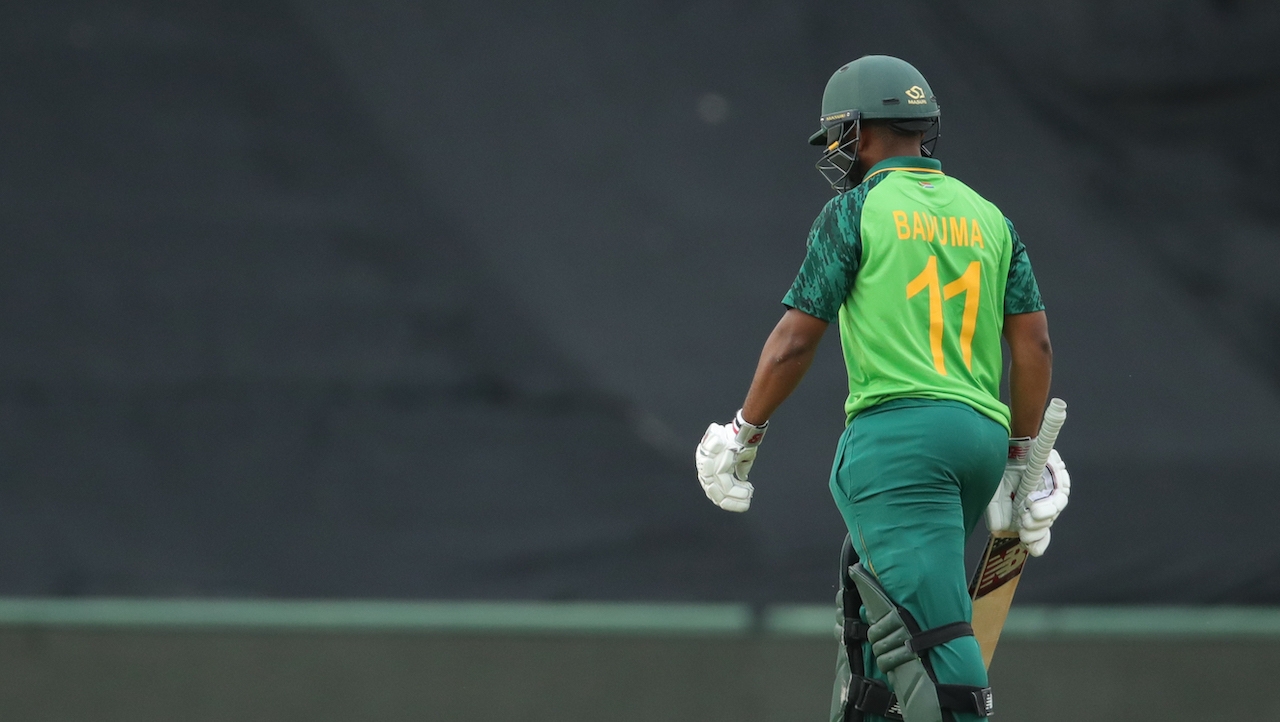
Samuel Shivambu/BackpagePix
As Vinnie explained, World Cups are almost torturous, and to make things even more interesting, South Africa tour the most hostile and fiercest opposition in their own backyard only a few weeks after the World Cup.
Barnes insisted that healing from the wounds of the World Cup and from the abuse players got on social media, should be dealt with before we board a plane to Australia next Thursday.
“There’s going to be the media in our faces and they’re going to be talking about us losing against the Netherlands. We’ve got to understand that we have to deal with it right now. We probably are,” said Barnes.
“We’ve got a young coach in Mali and as CSA we want to ensure that Mali has all the support and the resources he needs to ensure that when they leave here, they are ready and prepared for the tour. But right now, dealing with the fallout of the World Cup is most important. Some guys have to deal with it a bit deeper than others.”
Barnes was part of the coaching staff when South Africa won a Test series for the first time in Australia in 2009. That team was led by Graeme Smith and had also beaten England in England prior to the tour Down Under.
“When we got to Australia in 2008/09, Mathew Hayden was talking about how he is going to take down Dale Steyn,” Barnes remembers.
“But that’s normal for them. They will look at who they can attack. They will go for people like Dean Elgar. They’ll go for Temba because they know they will create vulnerability in the team environment.
“This is what they have been doing for many years. They are going to target individuals and sometimes they do it through the media. If the Aussies get on top of you, they will hammer you into the ground,” he added.
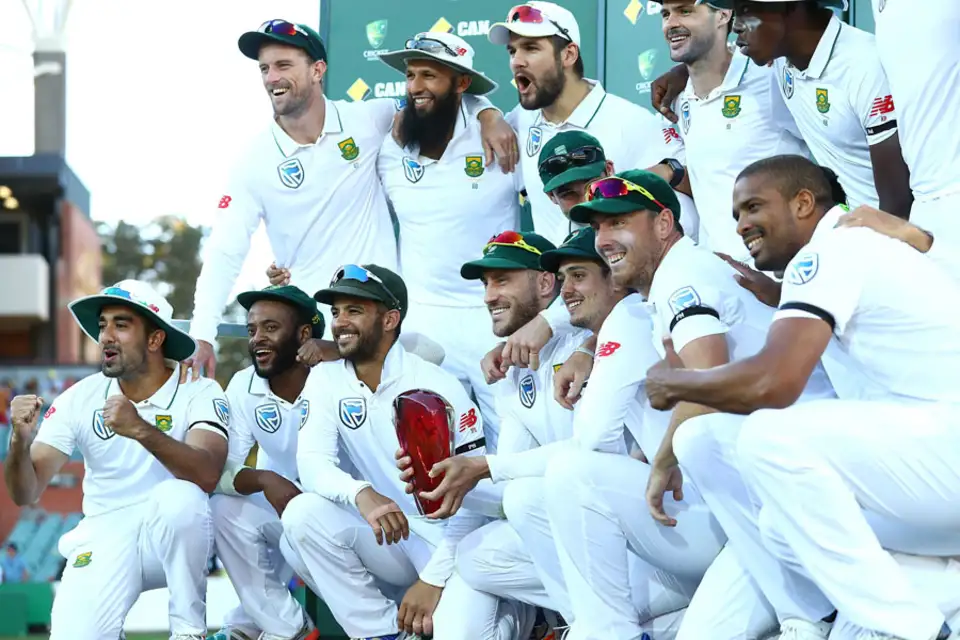
The Proteas made two more trips back to Australia since 2009. They won the Test series in both tours (in 2012 and 2016). But things have changed. The class of 2022 is different in many ways from the trailblazers before them.
To help close the gap, Barnes engaged in a tweet in which he outlined what the class of 2009 had, for the current generation to look to implicate and embody.
But belief and confidence are result based. Where will this Proteas Test side draw the belief and confidence from having been beaten by England 2-1 in September?
“The team is completely different now. Back then we had a team on top of their game. We don’t have that type of batting lineup. It’s a team that’s in transition, but we can’t be in transition forever.
"It’s going to be a lot of soul searching, a lot of discussions as part of their prep. A lot of their prep is going to be psychological. We’ve lost now to England and also lost two players to injury,’ said Barnes.
“There’s no doubt that each player in that Test squad is a very good player. They’ve earned the right to play for their country. There’s no issue with the ability, skill and talent, it’s about how to deal with that type of pressure now going into a series like that.
"That’s the important part here. Mentally we’re going to have to dig deep and step up for a series like this. They are going to be noisy, they will make it very very difficult for us.”
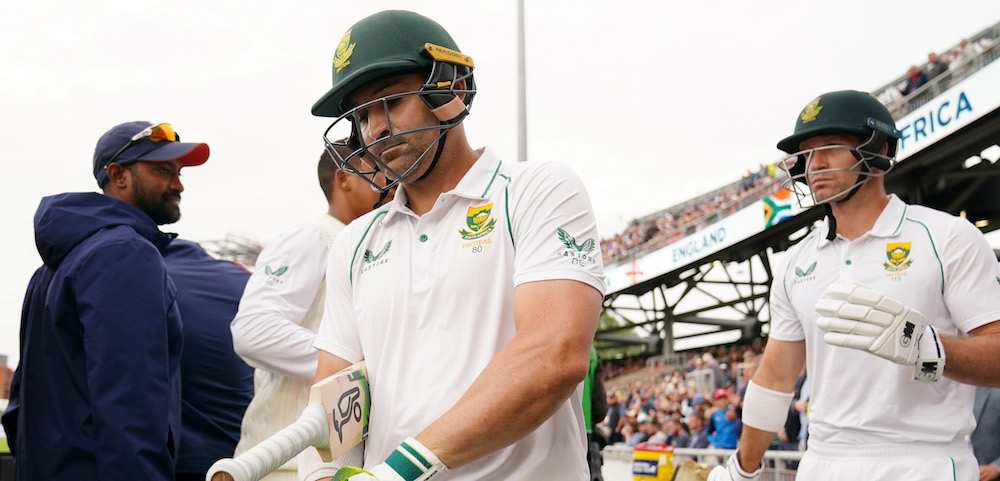
David Davies/PA Wire/BackpagePix
The last thing South Africa needs after the T20 World Cup is to lose in Australia. Perhaps not so much about losing the series because we all know that this Australian Test side is very strong and can beat any team in the world, especially at home.
It is rather the concern of another South African team rolling over under pressure – pressure both from the media and the on-field pressure. The many vivid nightmares of the Proteas teams crumbling under pressure, strengthen the concern felt by many cricket lovers in the beautiful rainbow nation.
“Focus on the massive tour ahead of you. If I took any player that’s in that squad they’ve performed here domestically. The last thing we want is for them to question their own ability. Don’t question your ability. Don’t question what you can do,” Barnes echoed in an attempt to pass on wisdom and to inspire the class of 2022.
“You can’t be fighting yourself because you’re up against a massive opponent. Your mind has to be clear as to what you’re going to be facing. Your challenge is not yourself. Get out of your own way. Allow yourself to face Pat Cummins or bowl to David Warner,” he added.
Win or lose. Fight or flight. There’s just no place to hide in international cricket.
“When I got involved with the Proteas, Gerald Majola was still involved with CSA. He said to me – ‘just remember, you’re part of an international team now. There’s no place to hide.’ I still carry those words with me,” said Barnes.
Advertisement
Ezra Poole's Online Wicketkeeping Academy
Learn how to Master The Craft of Wicketkeeping Without Having to Hire a Full-Time Personal Coach.
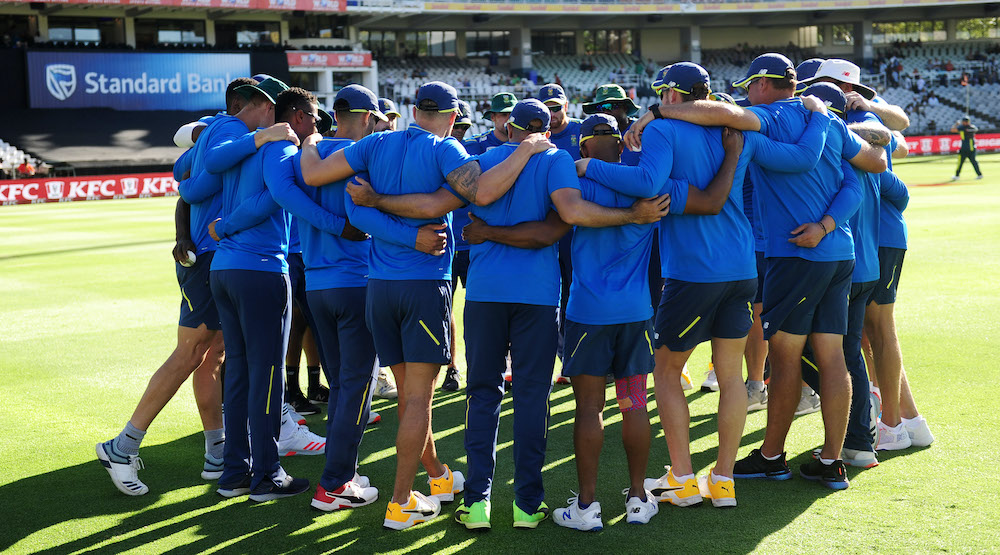
Garra Charrua, Sisu and Protea Fire
By C.S Chiwanza
A lot is said about players showing up to a contest...
I recently came across an interesting phrase: Garra Charrua. It is an Uruguayan term. It has been used to define the essence of Uruguayan football for decades.
In 1950, Uruguay produced one of the biggest shocks when they beat Brazil, a country with a larger talent pool because of a population 60 times larger than theirs, a population whose psyche is dominated by football. Uruguay beat Brazil 2 - 1 to lift the World Cup title. That team had Garra Charrua.
The 1950 title was Uruguay's second title in their second World Cup appearance. They lifted the 1930 World Cup title. Two years earlier, they had won gold at the Olympics. Uruguay had a reputation for being giant killers. Those teams possessed Garra Charrua.
The English translation of Garra Charrua is Charruan Claws.
The Charrua were an indigenous Uruguayan tribe. There isn't a lot of information about the Charrua - unlike the Incas, Mayas or Aztecs of Central America. The Charrua people are said to have been ferocious and brave against impossible odds. The 'claws' signify their fighting spirit. The Charrua showed their claws, their fighting spirit, when they defended their land against better-armed European settlers.
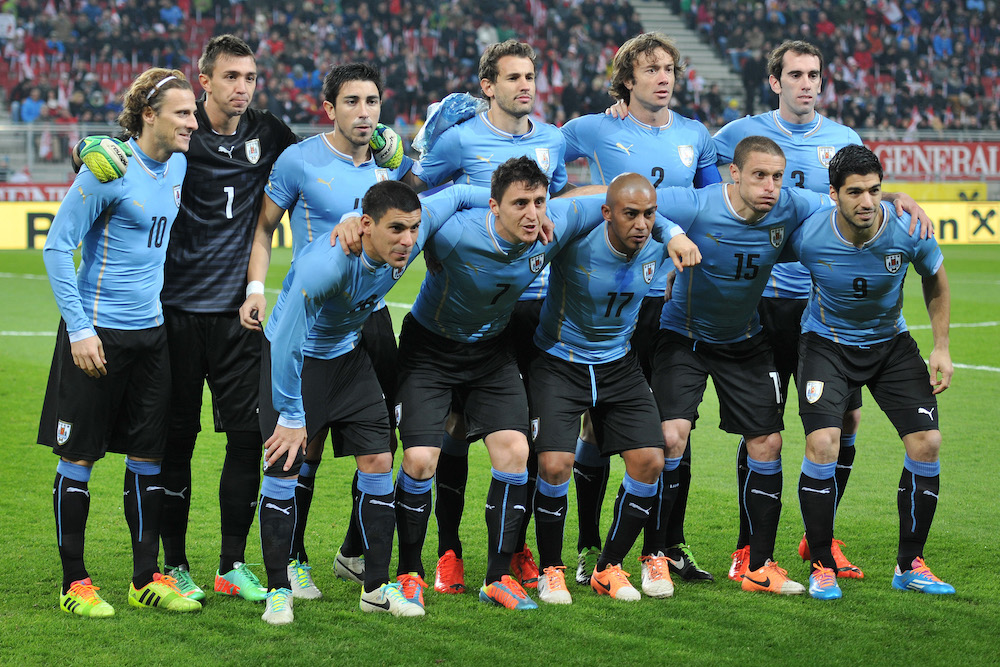
In Uruguay, garra's meaning is much closer to what the Finnish call sisu. The definition of sisu is hard to translate. Literally, sisu refers to the insides of a person, their guts.
The Finns translate sisu as “the Finnish spirit”. Finns believe they are born with sisu. One description of sisu that I saw read as this: it is a compound of bravado and bravery, of ferocity and tenacity, of the ability to keep fighting after most people would have quit, and to fight with the will to win.
Sportspeak or sports language has an endless list of clichés that attempt to define these traits: “refusing to back down,” “fight tooth and nail,” “work harder than your opponent,” “the willingness to die in battle,” “fighting until your last breath.”
Graeme Smith coming out to bat with an injury at number 11 to save a Test in Australia is garra.
Garra Charrua. Sisu. Fighting spirit. Grit. Guts. For the Proteas, this is Protea Fire.
Around 2010, Graeme Smith with the help of Jeremy Snape and Doc Moosajee developed the idea of Protea Fire. It was born out of a need for the Proteas to have a culture and identity. Up until then, the Proteas didn't have a culture that a player came into that had been passed down from generation to generation.
With Protea Fire, the Proteas attached a story to their badge and gave meaning to their emblem. It now symbolized who they are as a team. The Protea flower is an adaptable flower. It is also really resilient and thrives in regions with hot and sunny climates where many other types of flowering plants might not survive.
The flower is also so resilient that it can regenerate from its underground rootstock after a fire.

For these fynbos, fire stimulates them to germinate and they emerge in a glorious blaze of colours.
This is one of the reasons why fire became an integral part of the Proteas' rituals. Before a tour or series, the Proteas have conversations around a fire. Conversations that are meant to make the new members feel accepted and also provide the team with a way forward. Fire has symbolism within the Proteas team.
As a unit, this is how the Proteas see themselves: forged in fire and resilient. They can sink to the lowest defeats, but they possess the Protea's ability to regenerate after a fire. Adversity only makes them stronger. In a variety of ways, ex-Proteas and current senior players speak of resilience being a part of their DNA.
Protea Fire is the Proteas' grit. Their Garra Charrua, their sisu. In a way, they all mean the same thing. These terms are at the heart of what so many of us believe you need to win in sports.
But, even with their Garra Charrua, Uruguay's fortunes changed after the 1950 World Cup. They have not been that fierce giant-killing outfit in a long time. With each failure, Uruguay's football team was asked to play with increased intensity; more garra. At each turn, they were asked to play harder, to show more respect for the badge and the past. They were told to ramp up the intensity to unseen heights.
But, how much more could they give when they were giving their all on the pitch?
Uruguay’s players went into every contest with as much Garra Charrua as the world cup-winning teams or more, but that did not get them over the line. The Uruguayans played with so much garra some of their matches devolved into a ruthless physical contests that left opponents injured.
The requirement for the Uruguayan team to play with more garra drove Diego Forlan to lash out: “Garra is misinterpreted. You always have to give it your all on the pitch, but a lot of countries play very well, even though they don’t have Uruguay’s garra and determination. And they win more important titles than us… Football changed, but we didn’t. And if we don’t start to change, things are going to keep getting worse, and all that garra in the world won’t help us.”
Garra alone is not enough. Sisu alone is not enough. Protea Fire alone is not enough, as Forlan argues. You can't run through every wall, some walls have steel reinforcement. As one of my favourite writers once remarked, life is not a Rocky movie.
Success (sustainable success) is a by-product of garra, skill and keeping up with the times. Sport evolves and so should teams if they want to remain competitive. But, change is not easy, especially in cricket. Many are dragged into the present while they resolutely hold on to the past.
The other day, I was talking with a head coach, and he bemoaned the shortage of ‘leaders of men’ among coaches. Many coaches are excellent tactically, but many of them also lack the skills for proper man-management. The traditional hard-nosed methods of coaching focused squarely on tactics and less on individual player needs are simply no longer adequate. Times have changed.
“It’s not enough for the players to play for their place in the team or for each other,” he told me.
They also should able to play for the coach, because they trust that the coach has their best interests at heart and trusts them to do a job. Trust is a big issue.
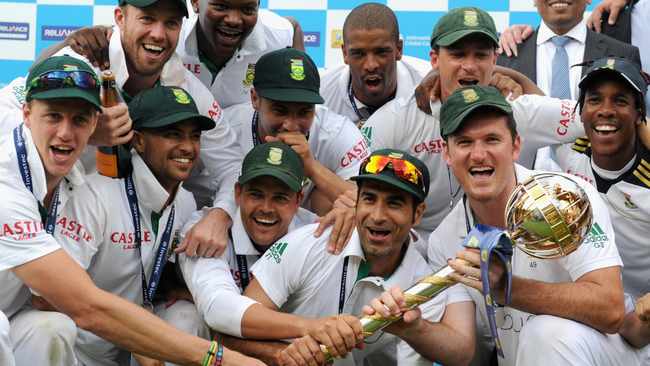
It's not just the man-management that matters, how the Proteas play also matters. What is the use of more Protea Fire if the team's philosophy is rooted in the 2010s? With their current philosophy, the Proteas are the least likely team to take advantage of match-ups or the state of the game when batting. They are most likely going to stick to the batting order they have on paper. Batting order fluidity is a foreign concept.
The Proteas need a reset of their white ball cricket philosophy. The players have the skill and ability, but they play according to what a coach desires. Sometime in 2021, I had a chat with a player who said the difference between playing the IPL and playing for the Proteas is that in the IPL, the franchise banks on a batter playing at least one match-winning knock. When with the Proteas, players are expected to be consistent, not match-winners. It’s a conservative approach.
Proteas players are still asked to go in with a safety-first approach, they are asked to be aggressive, but cautiously so. It’s a strange request, it sounds like this, ‘play your natural game, but you should tone it down a bit.’ And when the players are not being asked to play conservatively, they choose to be conservative because they do not trust that coaches and administrators understand that failure is as much a part of cricket as is success. They retreat into their shells and play for survival, not success.
When Uruguayan fans demanded more garra from their players, what they actually wanted was to see their team being more dominant, and showing superior skill and execution. They just did not know how to say it. After all, when Uruguay made their mark on the world of football, they didn’t only bring Garra Charrua.
Back then, most teams played football in a forceful manner: long balls, little creativity and no rhythm. Uruguay burst on the scene looking like an orchestra, with short passes and individual brilliance. It was beautiful to watch.
Ditto for the Proteas. The problem is not that they underperform in white-ball cricket, it’s not that they don’t live up to Protea Fire and preceding generations, but that they espouse an out-of-touch and dour philosophy.
Of course, a reset can happen, but it will come with the appointment of a coach in touch with the times.
However, for this to work, there needs to be trust between the players and the administrators. The difference between the ECB and other boards is that the ECB provides players and the coaches all the tools and information to be the best they can. Players are the cricket board’s biggest asset and the board’s duty is to look after them, not the other way round.

Book Review: Faf: Through Fire
By Aditya Mehta
Faf du Plessis has always been regarded as a charismatic leader, astute tactician, and dependable batter.
Widely considered to be a future South African cricketer right from his school days at the Afrikaanse Hoër Seunskool, it would have been fair to assume that Du Plessis’ autobiography would revolve around his numerous cricketing exploits.
Upon reading the book, however, it is evident that cricket is merely the backdrop in Du Plessis’ story.
Faf: Through Fire explores the human element of an accomplished international cricketer, who was driven to serve South African cricket by investing in the human beings that represented all of South Africa on the cricket field.
Du Plessis chronicles his career in cricket through the lens of leadership, culture, and relationships. Although these are recurring themes in the book, Du Plessis’ ability to reflect honestly on his experiences stands out. He writes about the effect of his parent’s divorce on his inability to respect relationships as a young adult. The lack of a template for a healthy relationship contributed to Du Plessis’ frequent indiscretions in his personal life.
Du Plessis credits his wife, Imari, for bringing about balance to his life and facilitating a values-driven approach to their relationship, which would then be the bedrock of his leadership philosophy in the South African cricket setup.
Despite the challenges in Du Plessis’ childhood with respect to his parents’ dynamic, his father instilled the discipline and mental toughness that allowed him to successfully navigate the hurdles he faced throughout his professional career. Du Plessis was also grateful for his mother’s tenderness and sensitivity that balanced his father’s strict and uncompromising approach to raising him.
Although Du Plessis showed incredible discipline in his cricket career, it wouldn’t be until he turned 26 that that discipline was also a part of his personal life.
After being hailed as a child prodigy in school cricket, Du Plessis’ road to becoming an international cricketer in January 2011 was long-winded, unlike his schoolmate and friend, AB de Villiers, who made his international debut in December 2004. Du Plessis writes about a sense of jealousy that he felt seeing De Villiers’ talent blossom on a cricket field. Once du Plessis learned to channel his energy more positively, he was able to appreciate De Villiers’ prodigious talent to the extent that he became his most vocal supporter.
In trademark Du Plessis humour, he describes a gathering organized by De Villiers on the eve of a Test match against England in January 2005 in which he scored 92 and 109.
“AB opened the batting with Herschelle Gibbs, so there is every chance that neither of our openers slept much the night before, but I can only testify for AB.”

Du Plessis’ longstanding commitment to representing South Africa is evident throughout his autobiography. It reflects in his decisions early on in his professional career when he turned down a lucrative Kolpak deal that would enable him to play for England, right to the end of his international career when he tried to work with Cricket South Africa to find a way for him to play the ICC T20 World Cup in 2021.
Team culture has been integral to Du Plessis’ career in professional cricket. He was first hooked on to the idea through Richard Pybus, who ensured that all players were treated equally at the Titans. This was essential after an unpleasant encounter with Proteas batter, Daryll Cullinan, who expostulated Du Plessis for disrespecting his seniority by sitting next to him. The episode left a sour taste in Du Plessis’ mouth, but it was a valuable lesson he learned early in his career, which ensured that he would strive to make young players entering the team environment feel like they are valued members of the setup.
Du Plessis would feel this way when he made his international debut for South Africa in January 2011, shortly after an important culture camp held at Hennops River in Centurion. Although Du Plessis was not part of the team present at the camp, the ideas revolving around team culture would build the foundation for his career as a player and captain.
Throughout the book, Du Plessis insists that South African teams are at their strongest when leaders pay attention to soft skills in conjunction with hard skills.
He writes, “In my opinion, the Proteas environment is at its best when soft skills are given the same priority as hard skills: we have different cultures in the South African side, and we have to be sensitive to different perspectives. For that, you need to value relationships and lead with empathy and understanding.”
Du Plessis highlights the importance of the capping ceremony for a debutant. Inspired by Graeme Smith’s captaincy, Du Plessis asked players who knew the debutant closely to speak about the player. It was one way to ensure that players entering the team environment felt welcomed.
Owen Eastwood, a world-renowned performance coach from New Zealand, who worked extensively with the South African team on its team culture, and formed a partnership with Du Plessis when he was appointed captain, attested to the effectiveness of combining a human-centred approach with the technical skills. Du Plessis implemented a system of feedback within the team, where he asked Eastwood to speak with players individually and get their views on how the leadership of the team could improve.
The focus on soft skills drove Du Plessis to interact with players new to the team environment through regular coffee and meals. The emphasis, Du Plessis wrote, was on ensuring that players understood that their value to the team environment was beyond their performances on the cricket field. He also speaks highly of the contribution of senior players such as AB de Villiers, Hashim Amla, JP Duminy, Dale Steyn, and Morne Morkel, who were all given specific roles in an effort to maintain a nurturing team environment.
Another important team practice that Du Plessis held dear was the “no cell phone” policy for a half-hour after a game. It gave the team time to connect with each other after a victory or a loss. In particular, it was vital to protect players from the abuse they would typically receive on social media if they did not perform on the day. Du Plessis understood the impact of social media on a player’s mental health after he, and his family, received death threats following South Africa’s loss to New Zealand in the quarter-final of the 2011 World Cup.
The South African cricket team represented a wide variety of cultures. For the team to be accepted by 60 million South Africans as the national team, cross-cultural integration would be vitally important. Du Plessis’ recognition of this reality was triggered by an impromptu picture clicked on the cricket pitch after a win.
Admittedly, Du Plessis was “disturbed” because all the individuals in the picture were from the same cultural background, and he believed that the team needed to mix more consciously if it were to truly represent all South Africans.
Du Plessis assigns significant importance to the captain’s relationship with the head coach of the team. His healthy and fruitful partnerships with Russell Domingo and Ottis Gibson were attributed to them operating “as a unit.” Both, Domingo and Gibson, invested in their relationship with du Plessis and bought into the team culture that he was trying to create.
Domingo’s empathetic approach to coaching with the phrase “everybody needs love” stuck with Du Plessis and he uses it often throughout the book. Although Domingo was familiar with the Proteas team culture, having worked under Gary Kirsten’s leadership, Du Plessis pays special respect to Gibson, an overseas coach, for buying into and respecting the team’s culture.
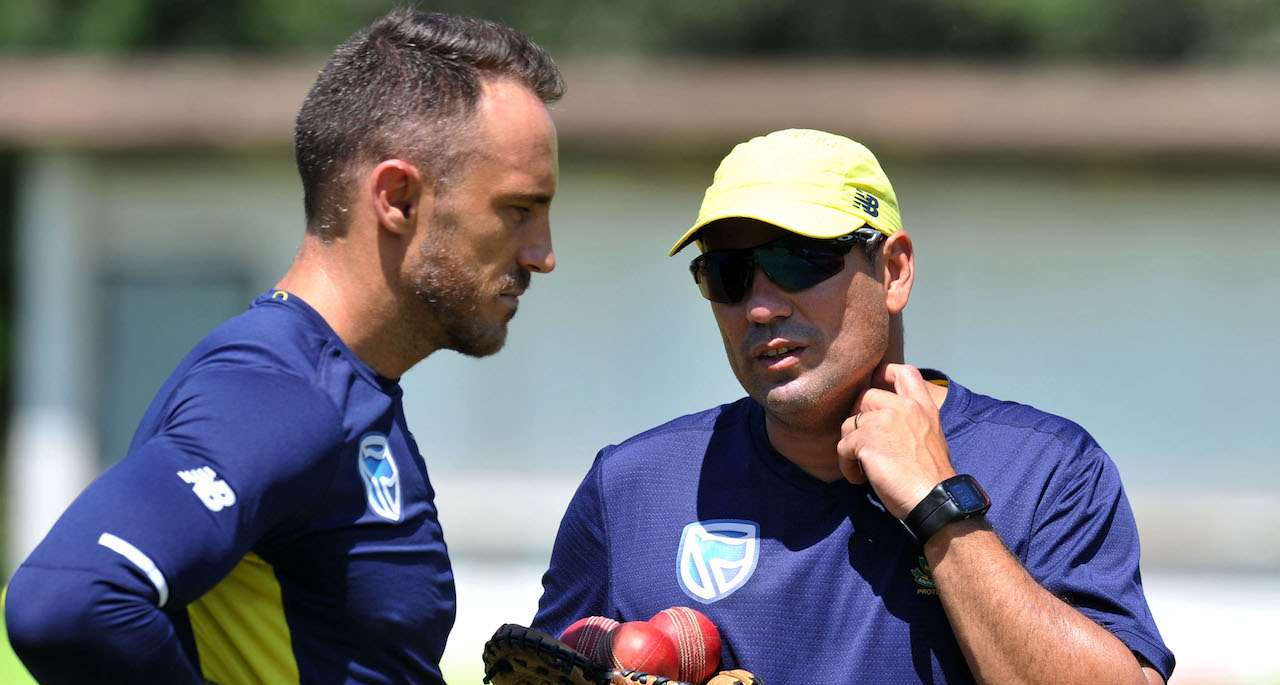
When Mark Boucher was appointed to coach the Proteas after a tumultuous period for South African cricket, Du Plessis struggled to connect with him in the way that he did with Domingo and Gibson.
“Mark’s relationship with me felt somewhat cold and distant. If I wanted something from him besides cricket, it had to come from me, and I wasn’t comfortable with that being our dynamic.”
Reflecting on his relationships with Domingo and Gibson, Du Plessis writes, “My only frame of reference was the two previous head coaches under whom I had captained the team. With Russell and Ottis, I had become used to coaches who invested heavily in our relationship. When we were under the pump, we’d have each other’s backs in public.”
The Du Plessis-Boucher partnership, in addition to Graeme Smith being appointed as Director of Cricket and Jacques Kallis as a batting consultant, was supposed to herald a new day in South African cricket.
Instead, it left Du Plessis feeling insecure about his position in the team by the end of Boucher’s first series as coach.
“I was intensely frustrated by the end of the series. What was supposed to be a maiden voyage for Mark and me made me feel like a ship lost at sea.”
The biggest irony here is that Du Plessis had sought the appointment of Mark Boucher as a coach, Graeme Smith as Director of Cricket, and Jacques Kallis as a batting consultant long before Cricket South Africa formally appointed them in their positions.
It may appear as if Boucher lacks the warmth and soft skills to develop a relationship with Du Plessis.
However, Du Plessis clarifies that Boucher’s man-management style may have been different and incompatible with his own.
“It’s quite possible that I was still part of Mark’s plans for the future, but he had an approach to leadership that didn’t include soft skills and relational interactions. I just didn’t know him well enough to understand or appreciate his style.”
Du Plessis adds, “I couldn’t expect Mark to prioritise soft skills and relationships in the way I did. It’s not who he is. While he lacks the warmth I look for in a coach, his behaviour towards me might not have been him ignoring me.
“It was Mark coaching in the way that he knew best under extraordinary pressure and me finding it hard to adapt to a leadership approach that contrasted with mine in so many ways.”
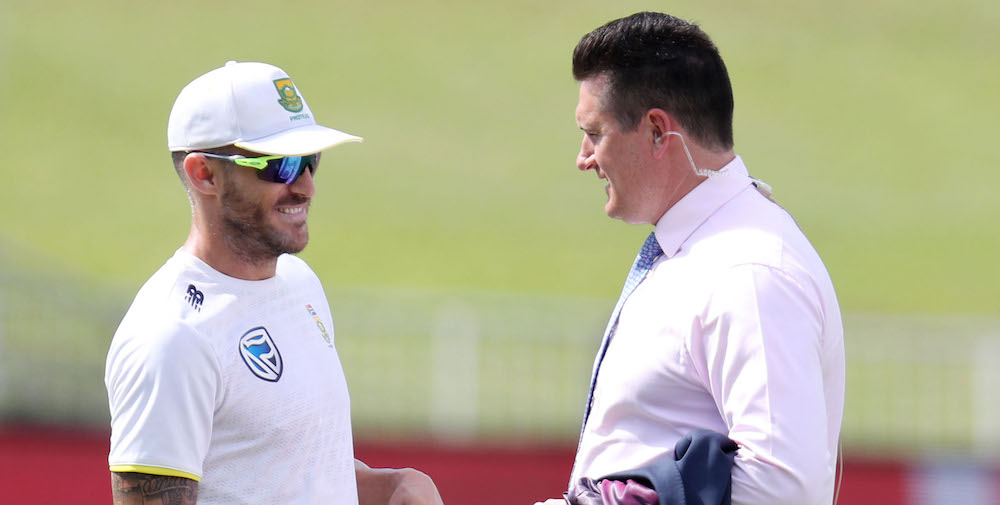
Du Plessis featured in three series for South Africa after relinquishing the captaincy. The disappointment he experienced at seeing a number of rituals that were instated during his captaincy no longer being followed is evident in his writing.
For instance, Du Plessis found Pite van Biljon’s capping ceremony to be a “diluted affair,” compared to the rituals that took place during his captaincy. He was also disturbed to see players focused on their cell phones right after a loss to Australia because the first thirty minutes after a game, in Du Plessis’ view, are crucial for team players to connect with one another.
Upon concluding Faf: Through Fire, it would be hard not to reflect on the degree of vulnerability that Du Plessis displays. Given that he was a part of dominant teams since his school days featuring future internationals such as AB de Villiers, Neil Wagner, Kruger van Wyk, Heino Kuhn, and Jacques Rudolph, where they lost two games in three years, it must have been challenging for Du Plessis to come to terms with the long transition that the Proteas faced under his leadership.
Considered to be the last in the golden generation of Proteas, he also won silverware with the Titans and his IPL franchise, Chennai Super Kings, multiple times.
To lead a South African team that was unable to replicate similar feats must have tugged at Du Plessis’ heartstrings, seeing that he was leading winning teams from such a young age.
As du Plessis wrote, “There are three words one should never forget or underestimate: Everybody needs love.”
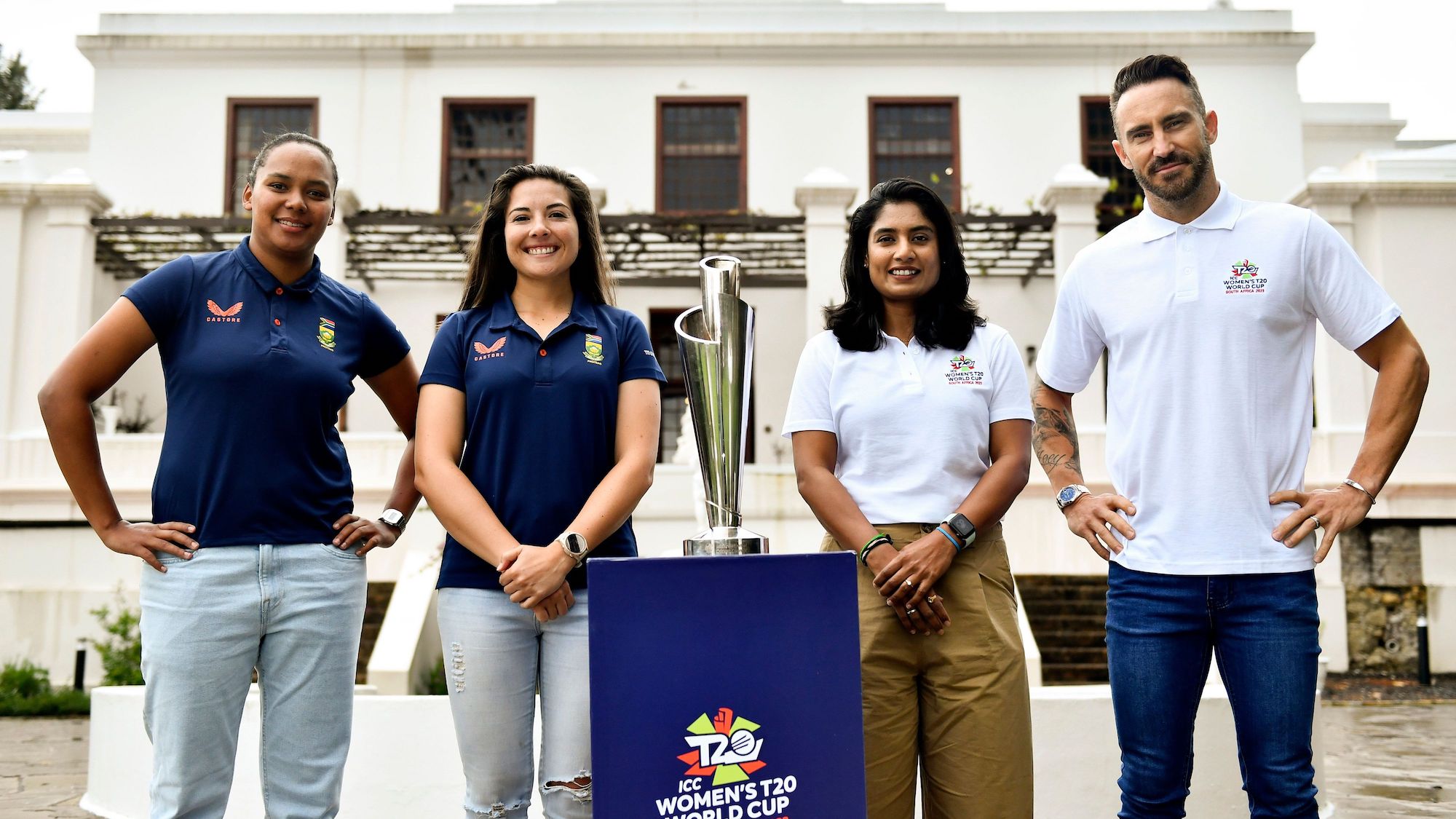
The Women's U19 World Cup will aid the growth of Women's cricket in South Africa
By Lubabalo Skhosana
The Women's U19 World Cup could aid the growth of Women's cricket in South Africa.
“Better late than never” a wise man once said, and perhaps the ICC too may say in its defence. The first-ever edition of the Men’s U19 World Cup was held in 1988 in Australia and the first edition of the women’s tournament is only going to happen next year. 35 years later.
It is, however, a good thing that the women’s game will also have a youth World Cup although the Women’s U19 World Cup will be in the form of a T20 tournament.
Initially, the tournament was set to take place in 2021 but was postponed due to the outbreak of COVID-19. It was later announced that South Africa would host the tournament just before the main Women’s T20 tournament. The U19 tournament would then serve as a curtain-raiser for the main tournament.
Having a youth World Cup for women’s cricket will be good in its entirety and will also aid many if not all countries in the growth of women’s cricket. South Africa stands to benefit from this tournament in terms of looking to grow women’s cricket and strengthening it at the same time. Having a youth World Cup has proven to be very important as we have seen in men’s cricket.
The experience and exposure that these players get are invaluable. Players like Virat Kohli, Kane Williamson, and Dewald Brevis (the list could go on and on) all played the U19 Cricket World Cup. This is a stage where some players made names for themselves.
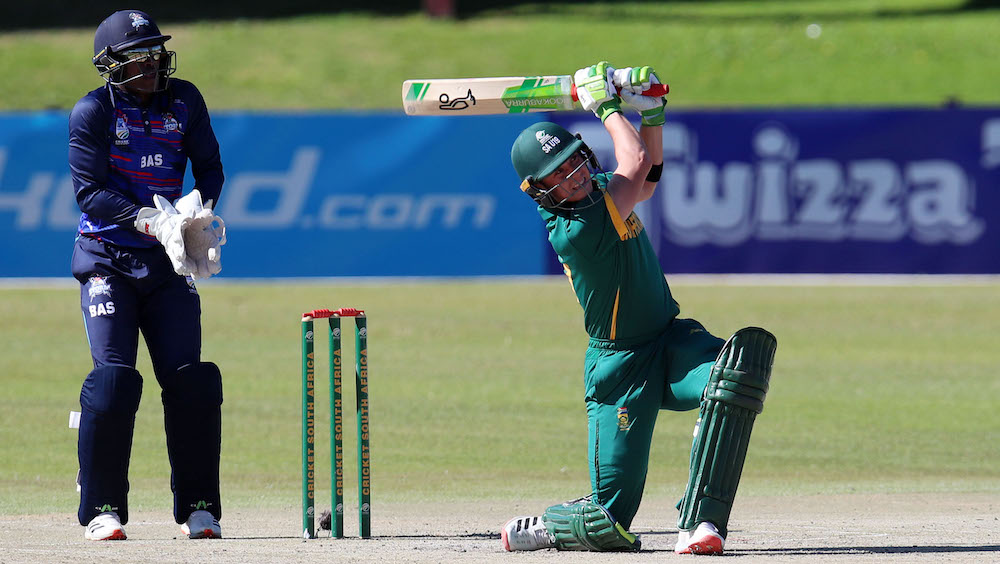
Muzi Ntombela/BackpagePix
The tournament will present an opportunity for the best U19 female cricketers from the participating countries to showcase their talent and skill in a global tournament. It can never be bigger than this.
A youth tournament also contributes to broadening a country’s talent pool and enables a country to have a few players that they can earmark as their next best stars even though national selection will not be exclusive to them.
Even in a South African context, this tournament will play a massive role in growing women’s cricket. South Africa is lacking in terms of development, and it is something that has been a concern for a number of years.
For the Momentum Proteas to be able to sustain their position as one of the best in the world and to be able to always compete against the likes of England and Australia, the development of women’s cricket will have to improve and be taken seriously.
The U19 World Cup will provide CSA and everyone involved in cricket, women’s cricket in particular, with an opportunity to start investing more time and funds into the development of women’s cricket.
I wrote an article in Cricket Fanatics Magazine a few months ago suggesting that maybe having a Director of Women’s cricket could best serve women’s cricket in the country. Having someone with a passion that is specific to women’s cricket could ensure that it gets the attention it needs.
Currently, in South Africa, not many girls have an interest in cricket and this could be pinned on several different factors. However, having an U19 tournament could make cricket attractive to young girls and draw their attention whilst making those already involved in cricket want to stay.
As mentioned above, the Men’s U19 World Cup has served as a stepping stone to many male cricketers and could serve as a stepping stone to many female cricketers too.
With all being said, the fact that 13-year-olds and 16-year-old girls in South Africa will see girls in their age group participating in a World Cup will also contribute to more young girls taking up cricket. The fact that they will have people they can relate to will entice them more.
This is a big opportunity for South Africa to take steps in the right direction as far as women’s cricket is involved. Hopefully, the tournament will be properly marketed and many aspiring cricketers will have access to it.
Coach Dinesha assembled a strong and exciting squad last month after a TAP camp. The squad took on Namibia U19 and did well, winning all their matches.
It will be interesting to see who makes the final World Cup squad early next year. These girls could be the next generation of Momentum Proteas so seeing how they progress from hereon is something to look out for.
The World Cup is still a bit far off but some pretty exciting players are most likely to make the final squad if fit.
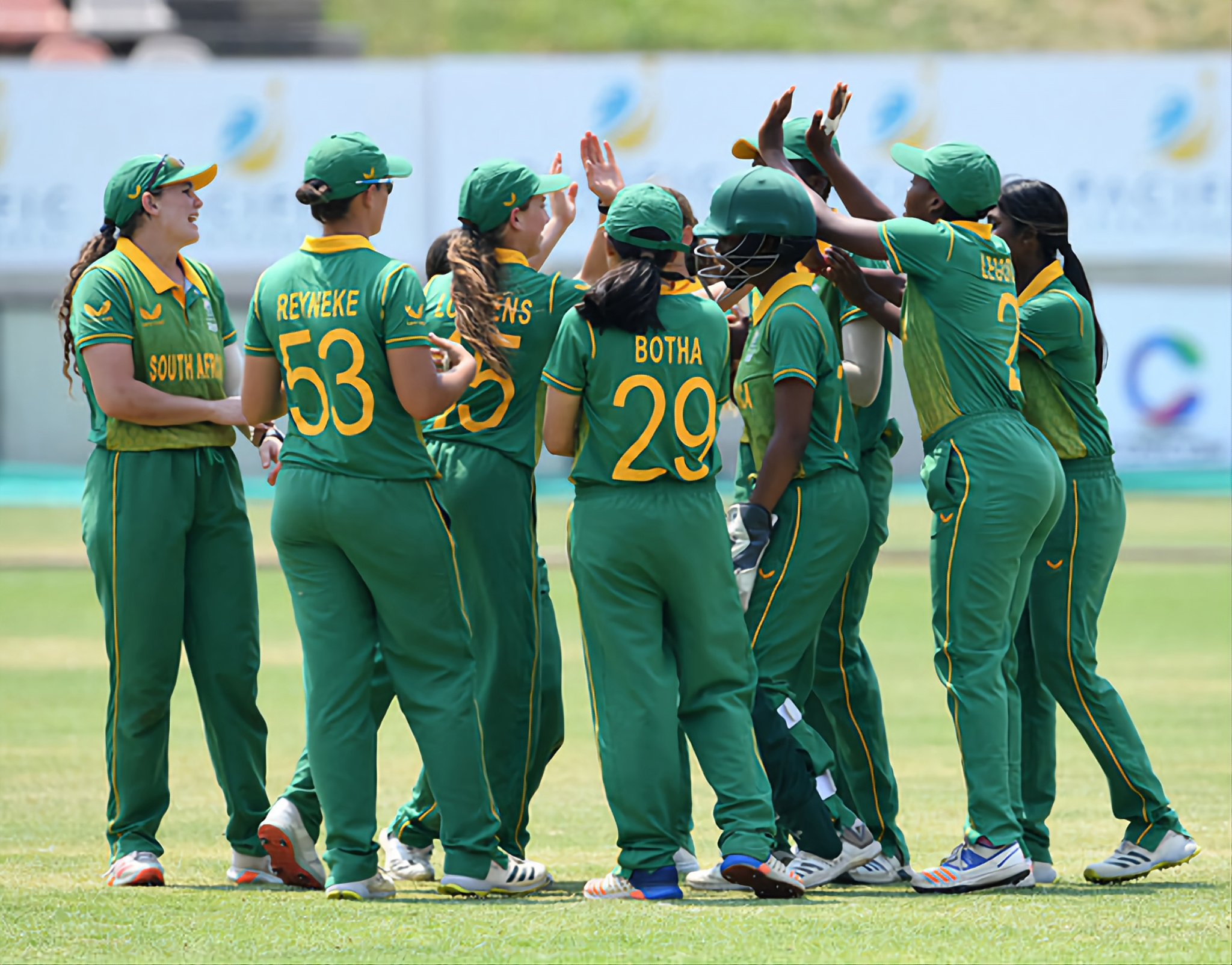
Elandri Janse van Rensburg
Interesting enough, I picked Elandri in my top 5 players to look out for in an article for Cricket Fanatics magazine. Elandri is an aggressive top-order batter who plays for North West. She is arguably one of the most exciting youngsters in South African cricket at the moment. She recently won U19 Girls week Player of the Tournament.
Karabo Meso
The Lions Wicketkeeper-Batter is diminutive in stature but a very classy batter who runs really well between the wickets.
Kayla Reyneke
A hard-hitting top-order batter just like Elandri. Kayla plays for Western Province and bowls some off-spin as well. Her offspinners could play a massive role for the team together with her exciting batting.
Refilwe Moncho
Another Lions youngster. I saw Refilwe for the first at the U19 Girls Week. She bowled with a decent pace but what caught my attention more was her accuracy and her ability to bowl yorkers. She would be my first pick of all the seamers
Madison Landsman
An allrounder from Easterns, Madison also made my top 5 picks. A very classy batter who can also take the game away from the opposition. She bowls leg spin and has played in the CSA Women’s T20 tournament.
Even though there was a squad of 15 selected for the series against Namibia, picking the final squad for the World Cup will not be easy for the selectors. There is a large group of quality young girls and each one can easily win you a game on their day.
However, I do not expect the squad to change much unless there are any injuries because ideally, as a coach you would like to have some continuity. The fact that most of these girls have played some senior provincial cricket will also work in their favour and the favour of the team heading into the tournament.
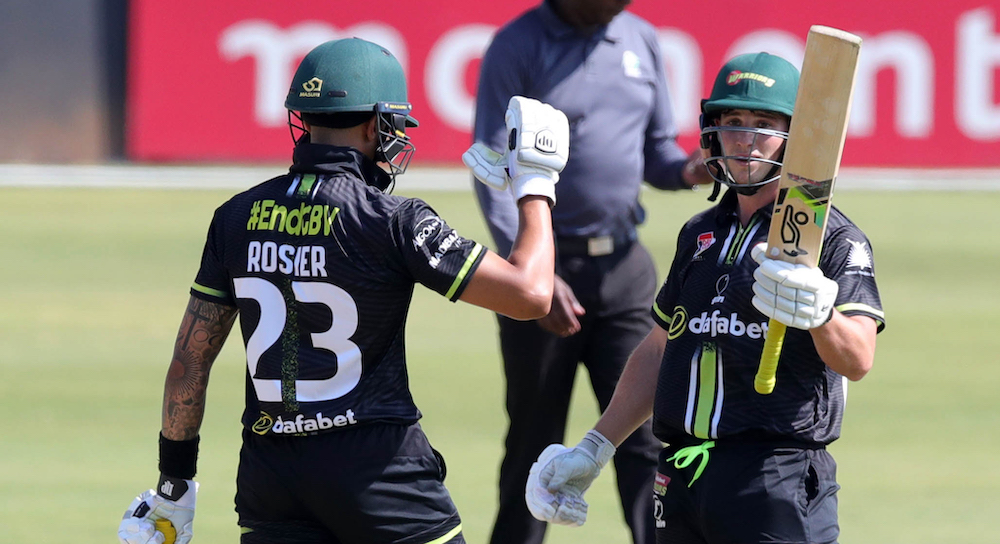
Q&A: Jordan Hermann
By Jessica & Janine October
Tell us how your career in cricket began.
I made my professional debut on the 29th of October 2019 against the Warriors for Titans, but I have been playing cricket since I could barely walk. I even have a photo of my first birthday with a cricket ball in my hand.
You were top player at the 2021 Cubs’ Week, tell us how felt at that moment. Also, do you think these types of campaigns support young cricketers in starting a successful career in cricket?
It was a special feeling at that time for me to prove the previous year’s performances wasn’t a fluke and that I have potential to take it forward from that age group on to the next levels.
I feel it is an awesome tournament for young players to play white ball 50-over cricket and measure yourself with the top players at that age group and open some doors and show some potential.
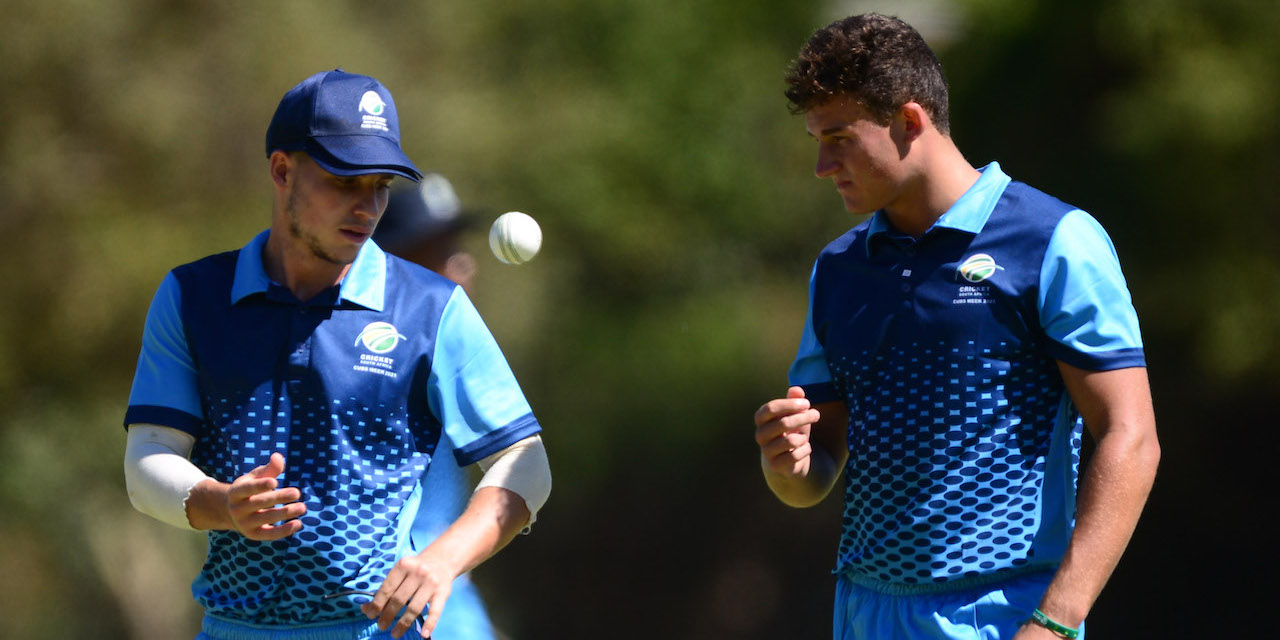
In October last year you debuted for the Northerns Titans and then the Eastern Cape Titans for the 2022/2023 season as a batter. How would you say you have developed your game since then until now? What have you learned?
I think I grew mostly mental on how I want to prepare for matches and the spaces I want to create and find myself in. I always try and work on some shots I think can add value to my game and some technical work that I feel has been very helpful to my game.
As a wild card signing for Sunrisers Eastern Cape in the SA20 tournament next year, what do you look forward to most?
I look forward most to be hopefully playing with and against some incredible cricketers and grow my game and learn and improve as much as I possibly can on and off the field.
Who is your favourite cricketer?
I do not have any particular favourite player, but I enjoy certain things from various players. For example, Liam Livingstone’s bat speed and swing or even the way Dean Elgar grits out an innings and fights for runs. I enjoy watching those certain things.
Who is your fantasy opening batting pair?
I would like to see someone like David Warner and Rohit Sharma, or KL Rahul dig into some bowling line ups. I think it would be very entertaining to watch.
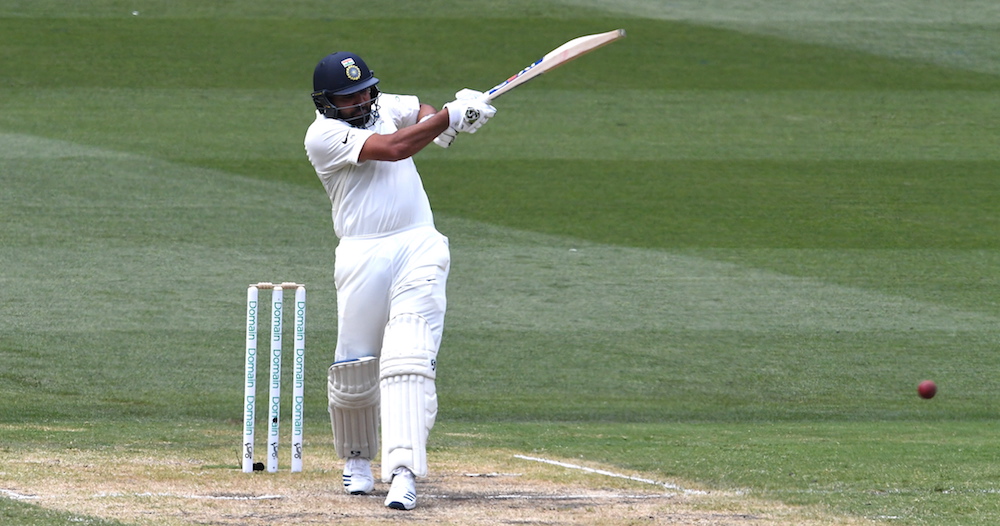
Which country are you supporting in the football World Cup? Why?
I was going for Germany but looks like that hope did not last long.
What food(s) do you enjoy most?
So, my go-to foods are spaghetti bolognese, chicken schnitzel or any form of a chicken pasta.
What are your top 3 favourite songs to listen to?
- Doses and Mimosas
- Long drives
- Most Spoegwolf songs
Are you following any series? If so, which one(s)?
I unfortunately do not trust myself with series at the moment as it ruins any sort of sleeping patterns I have or want to create.
Daily Show | Let's talk about it
Video Playlist
The Podcast Live Show:
Exclusive Interviews
Crossword Puzzle
SA20 Trivia
ISSUE 27: Crossword Answers
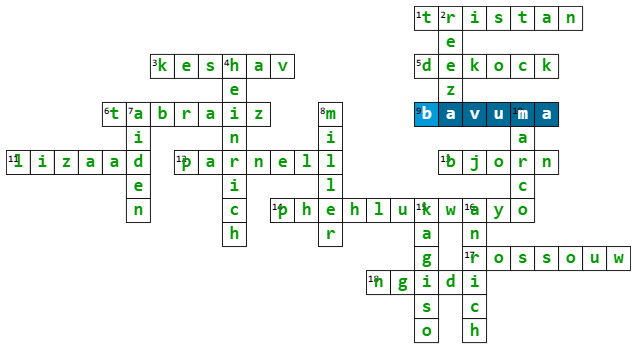

Magazine info
Editorial Director
Khalid Mohidin
IT and Technical Director
Faizel Mohidin
Contributors
Abhai Sawkar
Aditya Mehta
CS Chiwanza
Jessica October
Janine October
Khalid Mohidin
Lubabalo Skhosana
Marc Jacobson
Ongama Gcwabe
Graphics
Khalid Mohidin (Cover and Graphics)
Rabada Cover Image (Cricket South Africa)
Images
BackpagePix
Supplied
Twitter
Facebook
Cricket South Africa
Video Binge List:
On Lockdown Series
The Podcast Show
Legends with Ravi
Daily Show